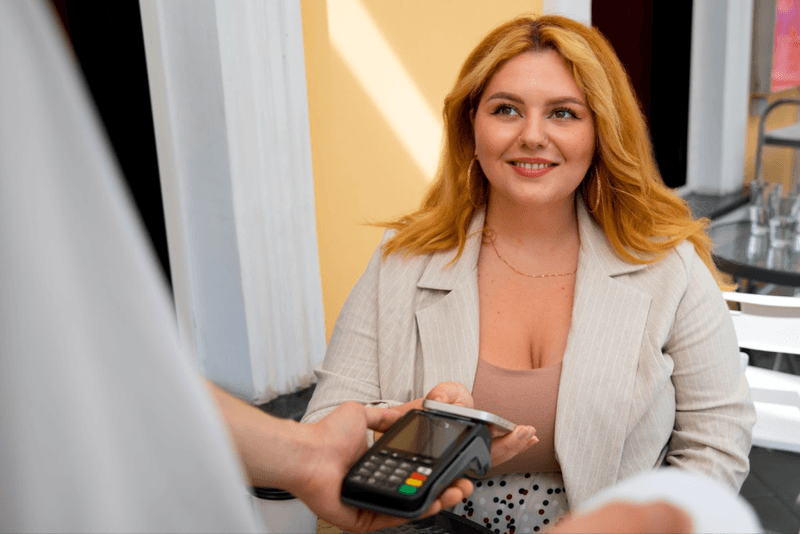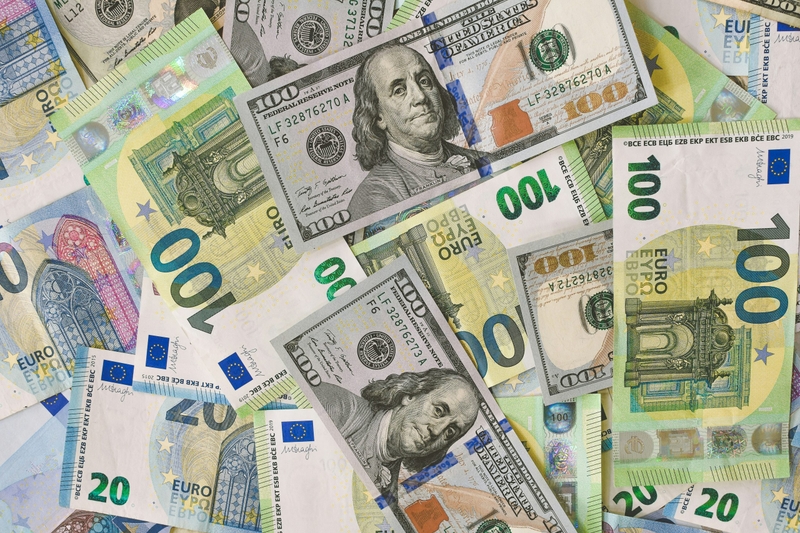

Currency Basket: What It Is, How It Works, Example
A currency basket is a deliberate mix of several currencies used as a reference point for valuation, hedging, or exchange rate management. Employed by central banks, multinationals, and global funds, currency baskets serve as a stabilizing tool, reducing excessive reliance on a single foreign currency.
VELLIS NEWS
21 Aug 2025
By Vellis Team
Vellis Team
Automate your expense tracking with our advanced tools. Categorize your expenditures
Related Articles

Vellis News
22 August 2025
Payment Facilitator vs Payment Service Provider
A payment facilitator (PayFac) is a company that allows businesses, especially smaller ones, to accept payments quickly by onboarding them as sub-merchants under its master account. A payment service provider (PSP), on the other hand, connects merchants to various payment methods and processors but usually requires each business to set up its own merchant account.

Vellis News
23 September 2025
What Is Google Pay and How Does It Work?
Google Pay is a digital wallet and payment platform developed by Google. It allows users to securely store debit and credit cards in one place, making payments faster and more convenient. With Google Pay, individuals can send money to others, complete online purchases, and pay in stores using contactless technology.

Vellis News
20 October 2025
How to Handle Payment Processing for Seasonal Businesses
Running a seasonal business is exciting, especially the thrill of seeing sales surge during your peak months and the satisfaction of serving customers when demand is high. But there’s also a major challenge: how do you manage payments efficiently when your revenue fluctuates throughout the year?
In this guide, we’ll explore what a currency basket is, how it’s constructed, real-world examples like the IMF’s Special Drawing Rights (SDR), and the benefits and limitations of using one.
What Is a Currency Basket?
A currency basket (also called basket currency or basket of currency) is a weighted collection of multiple currencies used together as a benchmark. Instead of pegging a currency to just one other, this approach allows an entity to anchor its value to a broader set of economic powers.
Think of a currency basket as a diversified portfolio – only instead of stocks or bonds, it’s built from the U.S. dollar, euro, yen, or others. Institutions like central banks, investment funds, and multinational corporations use them to smooth out volatility and reflect a fairer economic balance in their operations.
How a Currency Basket Works
Here’s how these currency baskets are typically structured and maintained:
- Determining Weights: Each currency in the basket receives a weight based on factors like trade volume, GDP share, or economic exposure. The U.S. dollar might comprise 40% of the basket, the euro 30%, yen 20%, and so on.
- Calculating Value: The basket’s overall value is calculated through a weighted average. If the U.S. dollar strengthens, its impact on the basket reflects its assigned weight—not disproportionately swaying the basket’s total value.
- Why It Matters: By balancing exposure across multiple currencies, the basket helps stabilize exchange rates and protect against foreign exchange risk. When one currency weakens, the strength of others can offset its volatility.
Common Use Cases for Currency Baskets
Currency baskets are versatile tools used in many financial environments:
Exchange Rate Pegging
Some nations peg domestic currency to a basket instead of a single currency, managing volatility more flexibly.
Investment & Portfolio Diversification
Global funds may track a basket of currencies to hedge their foreign exchange exposure and reduce portfolio risk.
Corporate Treasury Management
Multinationals with payments in multiple currencies often benchmark or hedge against a tailored basket that reflects their specific revenue and expense flows.
Examples of Currency Baskets in Action
- Special Drawing Rights (SDR): Issued by the IMF, the SDR is a reserve asset based on a basket of major currencies i.e. the U.S. dollar, euro, Chinese yuan, Japanese yen, and British pound currency.
- Asian Currency Unit (ACU): Proposed as a future regional basket among Asian currencies, it remains more theoretical than widely adopted.
- Private Sector Use: Some companies build their own custom baskets – such as 50% EUR, 30% USD, and 20% JPY – for internal budgeting or pricing models.
Pros and Cons of Using a Currency Basket
Consider the following advantages and disadvantages when exploring currency baskets.
Pros:
- Mitigates the risk of over-dependence on one foreign currency.
- Reduces volatility from currency fluctuations, especially when paired with strategies like currency overlay to actively manage exposure.
- Offers a balanced perspective aligned with long-term economic trends.
Cons:
- Adds complexity; requires ongoing maintenance and data monitoring.
- May reduce transparency due to weighted calculations.
- Weights may shift over time, requiring rebalancing based on evolving trade relationships.
Basket Currencies vs. Pegged Currencies
Some countries peg their currency directly to a single foreign currency (like the U.S. dollar), whereas others use a basket approach.
- Single Currency Peg: Offers simplicity and clear policy anchor, but can be risky if that currency moves sharply.
- Currency Basket Approach: Offers flexibility and a buffer against large swings though at the cost of more complex management.
Nations or businesses choosing between these models must weigh their trade profiles, economic exposure, and tolerance for volatility.
How to Construct a Currency Basket
For those looking to develop their own baskets, here’s a basic framework:
- Define Purpose: Decide whether the basket is for hedging, valuation, benchmarking, or internal accounting.
- Select Currencies: Base your choices on actual trade partners, debt exposures, or areas of economic influence.
- Assign Weights: Use indicators like GDP share, transaction volume, or strategic balance to determine each currency’s influence.
- Establish Monitoring and Rebalancing Protocols: Schedule reviews quarterly or annually to adjust weights as economic conditions shift.
A currency basket is a powerful and versatile tool for managing international exchange and financial risk. From the SDR to corporate treasury benchmarks, currency baskets reduce vulnerability to single-currency swings.
If you’re managing cross-border payments or corporate foreign exchange strategy, consider how this model could better reflect your exposure. For added efficiency and automation, explore solutions like Vellis’ foreign currency exchange service, which can integrate with your international payment workflows or existing treasury platforms.
Frequently Asked Questions
What is a basket of currencies used for?
It’s used to reduce risk, stabilize exchange rates, or serve as a benchmark for international transactions.
How is a currency basket calculated?
By assigning weights to selected currencies and calculating a weighted average exchange rate.
Who uses currency baskets?
Central banks, multinational companies, investment funds, and international institutions like the IMF.
What is the difference between a basket currency and pegged currency?
A pegged currency is tied to one currency, while a basket currency tracks multiple for greater stability.
Are currency baskets only used by governments?
No, private companies and financial institutions also use them for hedging and portfolio management.
References
Corporate Finance Institute. (n.d.). Currency basket: Overview, how to create, how to use. Retrieved from https://corporatefinanceinstitute.com/resources/foreign-exchange/currency-basket/
International Monetary Fund. (2023). What is the SDR? Retrieved from https://www.imf.org/en/About/Factsheets/Sheets/2023/special-drawing-rights-sdr
Corporate Finance Institute. (n.d.). Currency Overlay. Retrieved from https://corporatefinanceinstitute.com/resources/foreign-exchange/currency-overlay/

Ready to transform your financial management?
Sign up with Vellis today and unlock the full potential of your finances.
Related Articles

Vellis News
14 July 2025
What Is Anti-Money Laundering?
When you hear the term “anti-money laundering,” you might picture bank investigators and complex financial software. But what exactly is it, and why should you care?

Vellis News
23 June 2025
Online Pharmacy vs. Retail Pharmacy: What are the Main Differences?
An online pharmacy is a digital platform where individuals can order prescription and over-the-counter (OTC) medications via the Internet, while a retail pharmacy refers to a physical storefront, a brick-and-mortar one, where customers interact directly with pharmacists and purchase medications on-site.

Vellis News
10 June 2025
9 Factors Affecting Currency Exchange Rates
Currency exchange rates show the value of one country’s currency in relation to another. These rates fluctuate constantly, driven by how people and markets perceive a currency’s strength. The 24/7 Forex market enables currency trades in pairs, like EUR/USD, influenced by economic data, political events, and speculation.
We use cookies to improve your experience and ensure our website functions properly. You can manage your preferences below. For more information, please refer to our Privacy Policy.
© 2025 Vellis Inc.Vellis Inc. is authorized as a Money Services Business by FINTRAC (Financial Transactions and Reports Analysis Centre of Canada) number M24204235. Vellis Inc. is a company registered in Canada, number 1000610768, headquartered at 30 Eglinton Avenue West, Mississauga, Ontario L5R3E7, Canada.

